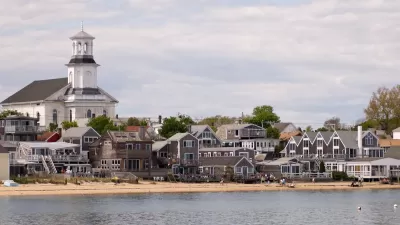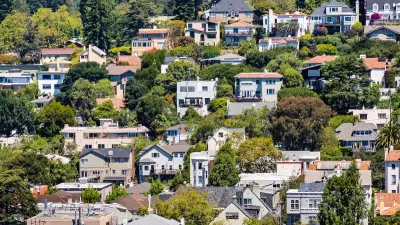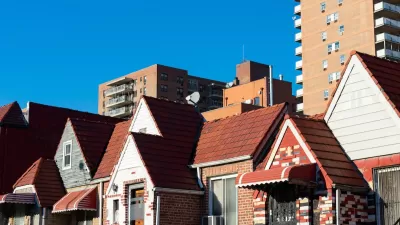The utility says it has dramatically reduced its backlog, but applicants say they still face months-long delays for approvals for new electrical work.

Homeowners in California say the utility company PG&E is delaying the building of accessory dwelling units (ADUs) through long and onerous permitting and inspection processes, making property owners wait as long as a year to approve new electrical panels or wiring.
According to a San Francisco Chronicle article by Jessica Roy, homeowners and developers are citing “pervasive” problems with the utility, including “weather-related delays, communication issues, inconsistent enforcement of rules from PG&E’s ‘Green Book,’ and poor management of the contractors PG&E outsources some of its work to.”
For its part, PG&E says it is working to improve its processes and that it reduced its application backlog from six months in 2023 to less than one month at the end of 2024. To ensure the process goes as smoothly as possible, the utility recommends “having a licensed electrician or general contractor advise them on the feasibility of the planned ADU location and panel upgrades; submitting a Residential Load Request Form to ensure the existing neighborhood power grid can handle the additional demand from an ADU; and having a site plan produced by an architect or civil engineer that lays out where the new structure and utilities will go.”
FULL STORY: PG&E is delaying ADU construction in California, builders and homeowners say

Study: Maui’s Plan to Convert Vacation Rentals to Long-Term Housing Could Cause Nearly $1 Billion Economic Loss
The plan would reduce visitor accommodation by 25,% resulting in 1,900 jobs lost.

North Texas Transit Leaders Tout Benefits of TOD for Growing Region
At a summit focused on transit-oriented development, policymakers discussed how North Texas’ expanded light rail system can serve as a tool for economic growth.

Why Should We Subsidize Public Transportation?
Many public transit agencies face financial stress due to rising costs, declining fare revenue, and declining subsidies. Transit advocates must provide a strong business case for increasing public transit funding.

How Community Science Connects People, Parks, and Biodiversity
Community science engages people of all backgrounds in documenting local biodiversity, strengthening connections to nature, and contributing to global efforts like the City Nature Challenge to build a more inclusive and resilient future.

Alabama: Trump Terminates Settlements for Black Communities Harmed By Raw Sewage
Trump deemed the landmark civil rights agreement “illegal DEI and environmental justice policy.”

Dear Tesla Driver: “It’s not You, It’s Him.”
Amidst a booming bumper sticker industry, one writer offers solace to those asking, “Does this car make me look fascist?”
Urban Design for Planners 1: Software Tools
This six-course series explores essential urban design concepts using open source software and equips planners with the tools they need to participate fully in the urban design process.
Planning for Universal Design
Learn the tools for implementing Universal Design in planning regulations.
City of Santa Clarita
Ascent Environmental
Institute for Housing and Urban Development Studies (IHS)
City of Grandview
Harvard GSD Executive Education
Toledo-Lucas County Plan Commissions
Salt Lake City
NYU Wagner Graduate School of Public Service





























